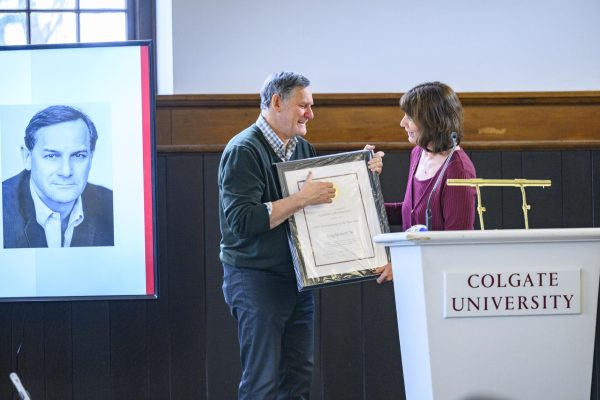Colgate Couture: Savage Beauty
The numbers are astounding. More than 661,000 people visited the McQueen exhibit at the Metropolitan Museum of Art between May 4 and August 7 of this year, making Savage Beauty the eighth most popular exhibit in museum history and the most popular ever for the Costume Institute. People from all over the world flocked to New York City to catch a glimpse of the late designer’s collections – many bought museum memberships just to be able to skip the line. This summer, when I arrived midmorning on a Thursday and learned that there was already over a two hour long wait, I approached a museum attendant and asked if there was any time during the week when there might be less of a line. She smiled at me as though she had heard the question a million times before and emphatically shook her head. “No,” she said, “unless you want to line up at 6:30 in the morning.” So I proceeded to get in the line for the actual line, and after snaking around the museum corridors for the majority of the morning, I finally found myself at the entrance of the exhibit. Inside its hushed rooms, I was overcome by both the beauty and absurdity of the outfits that adorned the stark mannequins. Just who was this man whose clothing stirs millions of imaginations? What can our fascination with his work tell us about his larger cultural impact and the role of fashion in today’s society?
He was born Lee Alexander McQueen on March 17, 1969 to a taxi driving father and a social science teaching mother in London, England. The youngest of six, McQueen displayed an early interest in clothing design when he began sewing dresses for his older sisters as a young boy. His career began in 1984 with a series of apprenticeships with the famed Savile Row tailors. It was during his time there that he became a master couturier and developed a keen understanding of garment making. However, it was not until some years later when he attended Central Saint Martins that he formally began to study fashion design. There, McQueen’s work was quickly noticed by the fashion world, and his clothing became well known for both its impeccable construction and shock value (his graduating collection was based off Jack the Ripper).
He once stated in an interview that, “You’ve got to know the rules to break them. That’s what I’m here for, to demolish the rules but to keep the tradition.” He became chief designer at Givenchy from 1996 to 2001, at which point he left to start his own label, Alexander McQueen. His achievements in fashion are vast; he won four British Designer of the Year awards (1996, 1997, 2001 and 2003) and the CDFA International Designer of the Year Award in 2003.
Fashion was the artistic medium through which McQueen not only expressed his profound feelings about mortality, the human condition and nature, but dared us to do the same. Thomas P. Campbell, Director of the Metropolitan Museum of Art, perfectly encapsulated McQueen’s work in his foreword to Alexander McQueen: Savage Beauty when he states, “mythic images of chivalry, brutality, and romance, ideals of heroic women, beauty in the unconventional – these ideas infused McQueen’s designs with an unparalleled emotional depth and challenged us to embrace new ideas about gender, history and nature.” His designs were the physical manifestations of a romantic genius.
In an almost tragically fitting ending for a man whose own sense of personal fragility pervaded his work, McQueen took his own life on February 11, 2010, a week after the death of his beloved mother, Joyce. Fashion lost one its most talented and influential contributors.
Alexander McQueen’s legacy lives on. Sarah Burton was named chief creative officer of the brand in May 2010. Her appointment was a natural choice – Burton had served as McQueen’s trusted assistant and confidante for over fifteen years. The first posthumous collections were received well by critics, and when Kate Middleton walked down the aisle in the label this past April in this century’s most iconic dress, it had all the markings of a McQueen masterpiece: the fit was perfect, the detailing was exquisite and its delicate contours were undoubtedly feminine. The Duchess of Cambridge continues to step out in the label during the majority of her public appearances. Although cut far too short, McQueen’s life and career promise to leave a legacy in the world of fashion.
Contact Lucy Baird at [email protected]







